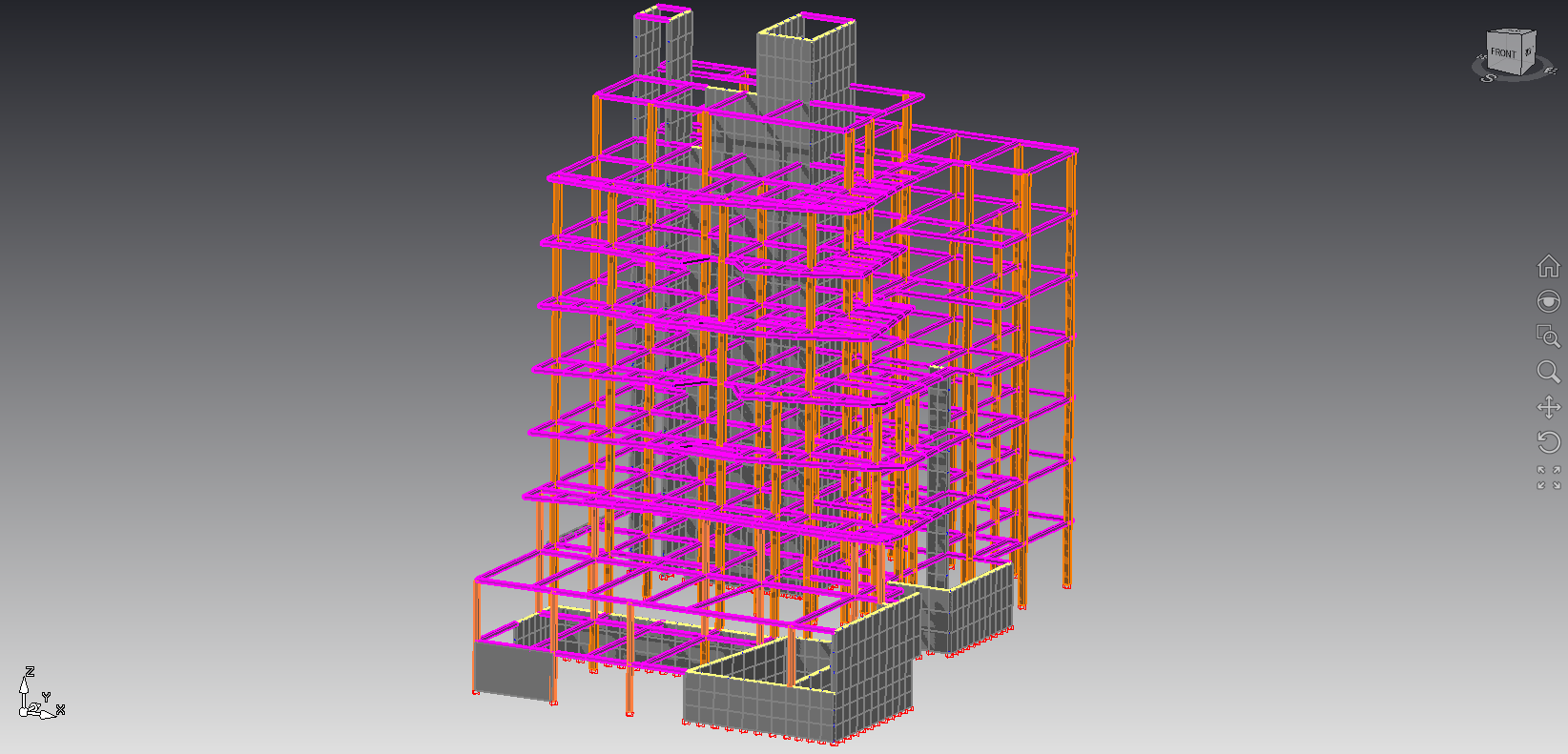
Design and verification of structures using the FEM method according to EC2, EC3, EC5 and NTC 2018
Pitagora – Design and verification of structures is a professional software created by ProgettoArchimedeSoftware srls.
It consists of 3 interfaceable modules:
- PITAGORA | STEEL
- PITAGORA | WOOD
- PITAGORA | CONCRETE (July 2019)
All three modules use a customized version of the Microsap finite element solver licensed and owned by Tesys sas.
Design and verification of structures in the seismic area
Verification of structures in seismic areas according to EC3 and NTC 2018
0.1. The MicroSap solver
Pitagora works as a pre and post-processor for the MicroSap © solver, made in a customized version for Dario Flaccovio Editore, which manages up to 400 elements (obtained from the sum of beam + shell).
0.2. Features and potential of this software
Pitagora is a tool of great help for the professional. The main functions are listed below. It allows:
- to carry out the structural calculation for the verification of structures in seismic area:
– arranged in the plane or in the space;
– discretized by means of a set of finite elements of the beam and shell type;
– in respect of the Eurocodes NTC 2018.
The beam element (in English, “asta”) is a three-dimensional element with two joints and prismatic section. It can transmit axial action, torque, biaxial bending moment and moment for a total of 12 degrees of freedom;
- to release any movement or rotation to extremes, in addition to the usual continuity constraint. This element is widely used in the analysis of different types of structures:
– flat and space frames;
– generic geometry structures based on beam / column members;
– continuous beams, etc.
3) to be able to define any number of geometric characteristics of the sections and materials and any type of concentrated or distributed load;
4) to perform simplified data input for particular and more frequent sections or loads in practice;
5) to introduce loads of versatile and fast gravity;
6) to conduct dynamic analysis by assigning the density of materials, mass per unit of length, or attributing concentrated nodal masses.
7) to model structures of any shape as it has a very powerful 3D graphic environment.
0.3. Graphic interface
Pitagora was developed according to 64-bit Microsoft standards using new object-oriented programming techniques.
It has a toolbar group that can be positioned as you want on the work area.
On the left, there is a window containing all the data and elements of the structure that can be used for filtered selection by property, as an alternative to traditional selection methods (available in the menu item selection).
0.4. Prints
Pitagora allows the creation of prints in .rtf format:
- of all input data
- of the results produced by the MicroSap solver.
These prints do not contain the results coming from the verification of the relative post-processors, which can be produced in the respective post-procession procedures.
In very large structures these files are very large.
Consequently, in order to make their management more streamlined, all data were divided into nine files:
) Preliminary report
2) Print structure input
3) Print nodal shift results
4) Print fem calculation results (stresses)
5) Print fem calculation results (deformations)
6) Print fem calculation results (foundation pressures)
7) Print shell solicitations
8) Print shell tension
9) Printing of foundation plate pressures.
You can also choose a compact printout of beam results.
0.5. Import / export dwg
importa dwg allows you to polish a reference architectural draft by converting the elements circles into nodes and lines in beam .
export dwg allows you to export all the elements of the structure in dwg-dxf interchange format that can be used by all CADs.
0.6. User manual
This manual is set up to guide you, step by step, to the correct use of the software – which in itself is quite intuitive – and analytically indicates all the commands and menus that allow it to be managed, in the following order:
- file menu
- general data menu
- node menu
- bar menu
- shell menu
- constraints menu
- load menu
- menu processes, with:
o fem model calculation
o static calculation
o seismic calculation slu and sld
o modal analysis
o seismic analysis
o verification of steel auctions DM 2018 – EC2 – EC3 – EC5
- results menu
- menu?
Minimum hardware and software requirements
The minimum requirements for using the program are as follows:
- Microsoft Windows 7, 8 and 10;
- processor and RAM memory capable of managing a 64-bit operating system;
- free space on hd of at least 100 MB;
- any graphics card designed for the opengl graphics library (the most modern cards are all prepared);
- any mouse and printer supported by the operating system used;
- minimum indispensable video resolution 1024 × 768.
Would you like to know more?
See the presentation brochure of our software



